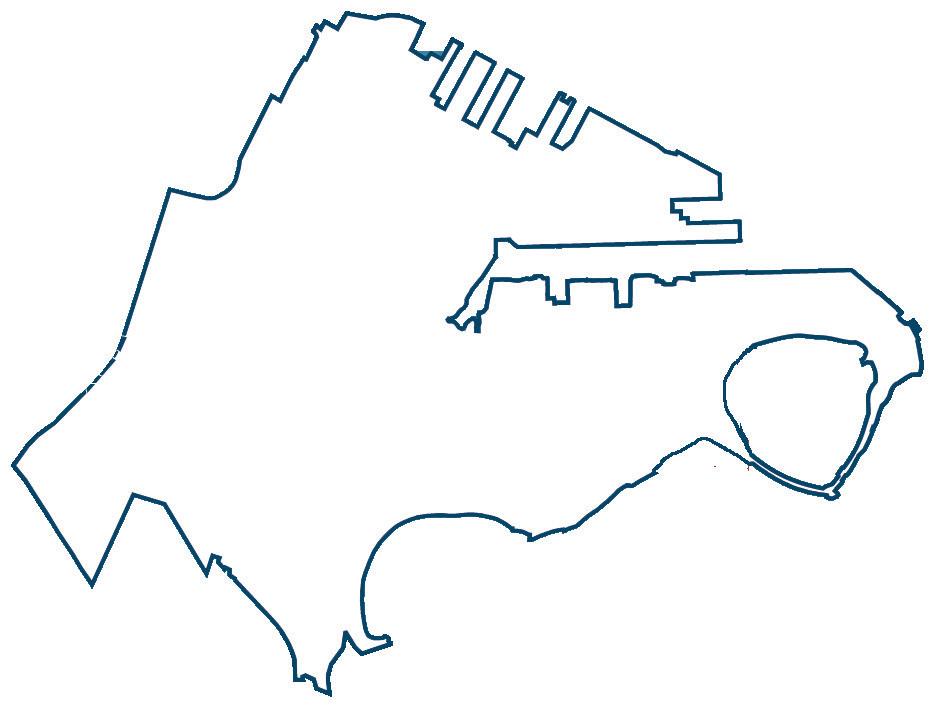
3 minute read
Getting Into Boston Is A Bumpy Road
side-running bus lanes,” explained Sophia Cotman, a staffer with the Boston Transportation Department’s transit team, in a phone call with StreetsblogMASS on Wednesday. “And in addition to that, these are going to be bus-and-freight lanes to hopefully alleviate some of the traffic congestion for trucks, which is something that Massport is pretty excited about.”
Mayor Michelle Wu’s 2024 budget proposal includes nearly $2 million for the Bluebikes bikesharing system, with funds specifically earmarked for discounted passes and for buying the system’s first electric pedalassist bikes. In a memo to the Boston City Council, Mayor Wu wrote that “we have included $550,000 to support $5 Bluebikes passes for 10,000 residents, expanding Bluebike usage and encouraging mode shift, plus $1.4 million to introduce electric Bluebikes across the system.”
Advertisement
Most other bikesharing systems across the country have been offering electric pedal-assist bikes alongside traditional bikes for several years now. Lyft, the company that contracts with regional cities to operate the Bluebikes system, has been offering pedal-assist e-bikes in most of the other bikesharing systems that it operates across the country, including Citi Bike in New York, Divvy in Chicago, and Capital Bikeshare in Washington. As for busses into Boston from South Boston, the City of Boston is getting ready to install new bus lanes on Summer Street through the Seaport neighborhood this summer, but the city’s plans have been watered down considerably since the idea for a new Seaport busway first emerged in 2020.
In November of 2022, the Boston Region Metropolitan Planning Organization (MPO) completed a Transit and Truck Pri- ority study that gives a background of this specific project among other info related to Transit/Truck priority lanes in general.

As part of the South Boston Waterfront research, MPO staff found that 670 trucks per day enter or leave the Seaport area via Summer Street at its crossing of the Fort Point Channel - seems an important route for trucks in this area. And commuters confront traffic challenges at that intersection.
Under the administration of former mayor Marty Walsh, the City of Boston had proposed a center-running dedicated busway on Summer Street through the Seaport to benefit riders of the MBTA’s 7-City Point bus, which connects South Boston, the Seaport District, South Station, and the downtown financial district. Under the city’s latest proposal, the center-running bus lanes have been replaced by curbside bus lanes, which are more likely to be blocked by illegallyparked vehicles and other traffic.
And, at the insistence of Massport, the state agency which owns considerable property in the neighborhood and operates a container shipping terminal near the southern end of Summer Street, it will be a “bus-and-freight” lane, which means that the MTBA’s buses will share the lane with trucks.
“The idea for center-running bus lanes got a lot of pushback from Massport and BCEC (the Boston Convention and Exhibition Center), so it has changed to having
The plan will also install new segments of protected bike lanes along Summer Street. “Currently the existing bike infrastructure will be added upon and improved to be more continuous,” said Cotman. “We’ll be adding connections through the places that are missing protection with striping and flexposts to add some additional separation.”
Summer Street currently has a short section of high-quality, curb-protected bike lanes near the Fort Point Channel and painted curbside bike lanes south of the convention center. The construction of the new Omni Hotel across the street from the convention center added another single-block segment of sidewalk-level bike lane on the north side of Summer Street between D Street and World Trade Center Ave., but it’s currently not connected to any other bike infrastructure, and the hotel’s management frequently blocks the bike lane and the adjacent sidewalk with illegally-parked cars.
Cotman explained that the new roadway configuration will be tested and evaluated in a 6-month pilot program, which would begin after new roadway striping and signal adjustments can be installed later this spring. The city plans to analyze how the pilot affects bus ridership, speeds, roadway safety, and rider satisfaction, “then make a decision about whether it should be permanently implemented,” explained Cotman. “If data shows that it’s not super helpful, the city will go from there to evaluate what else could be done.”
The proposal to install center-running buses on Summer Street was formerly ranked as the neighborhood’s highestimpact opportunity for improved transit infrastructure in the city’s South Boston Seaport Strategic Transit Plan, an ongoing study of ways to improve transit service and capacity in one of the city’s fastest-growing neighborhoods.
The 7 runs frequently – every 6 to 10 minutes during peak commuting hours –and as of March 2023, the line was carrying roughly 2,500 passengers on a typical weekday, which is roughly 50 percent of its pre-pandemic ridership, according to data compiled by TransitMatters.
The city is hosting one more public meeting or open house, as it has been called, on May 1, from 5-8 PM at Seaport District Hall on 75 Northern Avenue to further discuss its plans in greater detail with neighborhood residents and workers.
“City Hall staff will be there with additional information about the project, discussing why the project is being done, how evaluated, and looking for feedback,” said Cotman. “It’ll be an opportunity for people to talk with city staff members one-on-one and get all their questions answered.”





